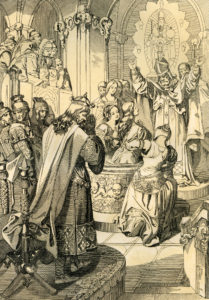During the first 300 years of Christianity, there were dozens of different Christian sects, each with their own unique theology. The most nettlesome issue of all was the relationship of Jesus to God: Was Jesus part of God or was He a separate holy being? Pagans, who were polytheistic, more easily understood the latter point of view.
Christian thought evolved to embrace a third concept, the Holy Spirit, as well as the belief that God, Jesus, and the Holy Spirit comprise a single entity. This monotheistic formulation became known as Catholicism and was affirmed at the First Council of Nicea in 325 CE. The Council labeled any other formulation to be a heresy, and the Church then attempted to eliminate competing sects. Many early records of Christianity were unfortunately destroyed during this purge.

In spite of the Church’s efforts, several sects of Christianity survived for many years, including the Arian sect. Arian Christians believed that Jesus was a distinct being, created by and subordinate to God. An Arian monk who lived in the late fourth century, the missionary Ulfilas, spent his life converting the pagan Goths of Gaul to Arian Christianity, in spite of the ruling of the Council of Nicea. Thus, Arianism was the dominant Christian sect in Gaul when Clovis united the region in the late fifth century.
Clovis I—The First Catholic King Of Gaul
Clovis I (466-511) was the first King of the Franks to unite all of the Frankish tribes, which had previously been separately ruled by individual chieftains. Clovis is a common ancestor of the Mullins family (through Elizabeth Johnston) and the Bonner family (through Nancy Bates).
Clovis was also the first Catholic King to rule over Gaul. His wife, Clothilda, was a princess from Burgundy, an area in south-central France that was never part of Clovis’ dominion. Although Burgundy was also an Arian Christian culture, Clothilda embraced Catholicism. She eventually convinced her husband to do the same.
Clovis was baptized Catholic in 496 at the abbey’s church in Rheims, a structure that became the magnificent Cathedral of Rheims in the 11th century. Clovis’ conversion led to the spread of Catholicism in Western and Central Europe, an event that can really be traced to Clothilda.
Today, the Cathedral of Rheims stands on the site where the historic baptism of Clovis I took place 1,500 years ago. Many French kings were crowned in the Cathedral.
© 2013 W. Mullins
